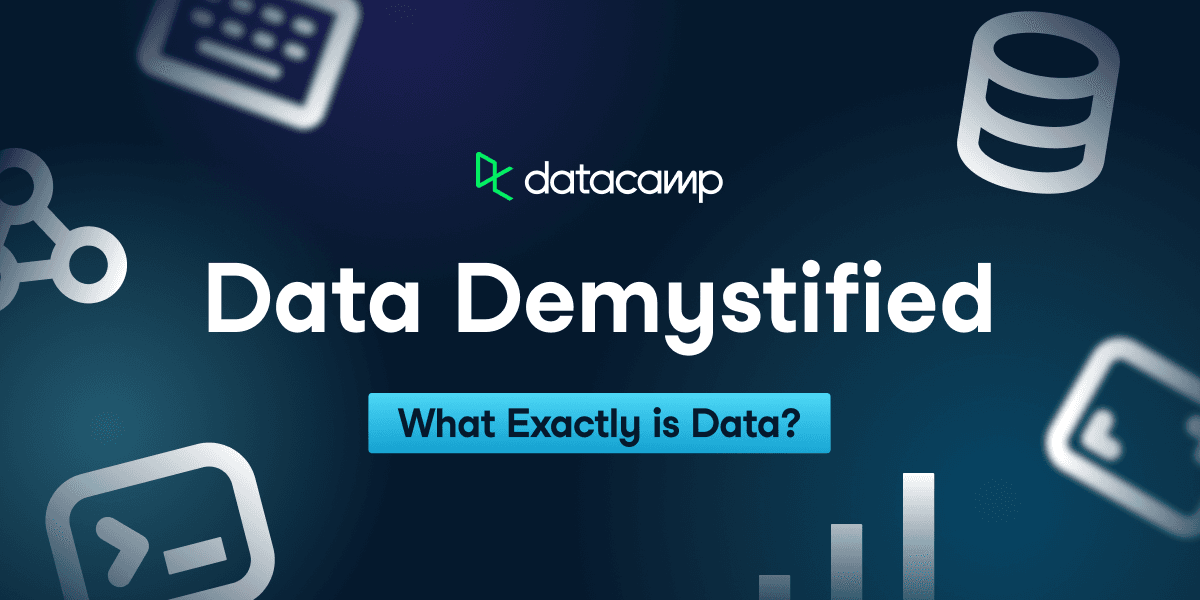course
Data Demystified: What Exactly is Data?
Welcome to Data Demystified! A blog-series breaking down key concepts everyone should know about in data. In the first entry of the series, we’ll answer the most basic question of them all, what exactly is data?
Sep 2022 · 4 min read
Topics
Data Literacy Courses
2 hours
611.8K
course
Understanding Data Visualization
2 hours
180.8K
course
Understanding Data Engineering
2 hours
229.9K
See More
RelatedSee MoreSee More
blog
Data Demystified: Quantitative vs. Qualitative Data
In the second entry of data demystified, we’ll take a look at the two most common data types: Quantitative vs Qualitative Data. For more data demystified blogs, check out the first entry in the series.
Richie Cotton
5 min
blog
Data Demystified: An Overview of Descriptive Statistics
In the fifth entry of data demystified, we provide an overview of the basics of descriptive statistics, one of the fundamental areas of data science.
Richie Cotton
6 min
blog
What is Data Science? Understanding Data Science from Scratch
In this blog, we delve into what data science is and explore the answers to frequently asked questions about the various aspects of data science.
DataCamp Team
16 min
blog
An Introduction to Data Ethics: What is the Ethical Use of Data?
Learn everything you need to know about data ethics, including the key principles and how they’re applied to your data.
Christine Cepelak
15 min
blog
Data Demystified: Data Visualizations that Capture Trends
In part eight of data demystified, we’ll dive deep into the world of data visualization, starting off with visualizations that capture trends.
Richie Cotton
10 min
blog
Data Demystified: The Difference Between Data Science, Machine Learning, Deep Learning, and Artificial Intelligence
In the third entry of data demystified, we’ll define the most common pieces of jargon you hear in data science today. From machine learning to deep learning, here’s all the subfields of data you need to know.
Richie Cotton
5 min
